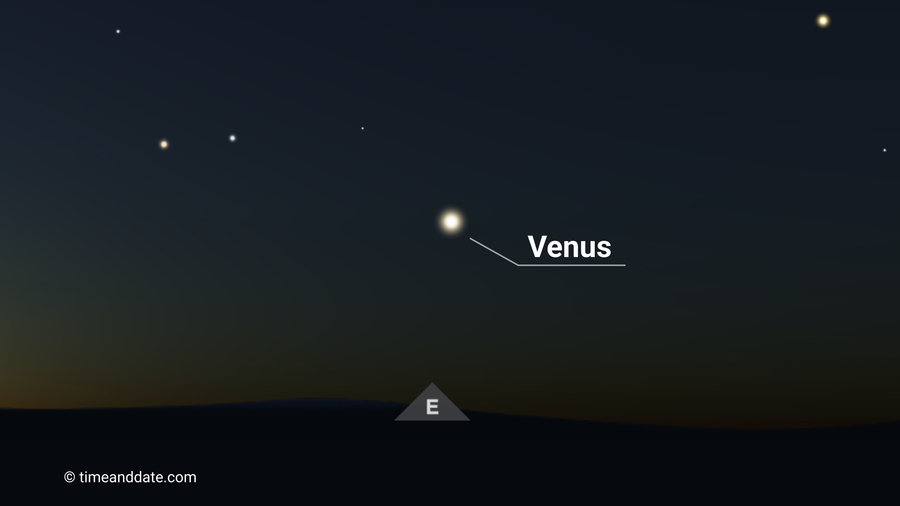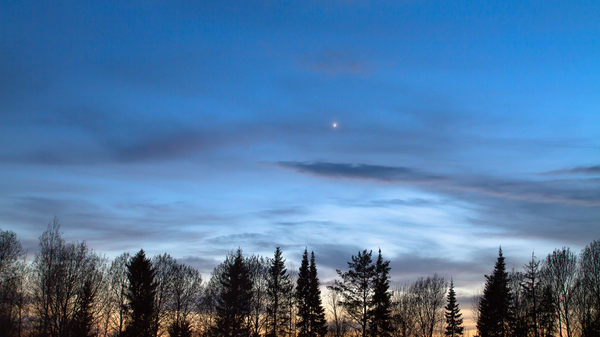
On June 1, Venus will appear farthest from the Sun in our sky, making it particularly easy to spot with the naked eye before sunrise. In other words, this is a perfect opportunity to observe the brightest planet in our sky during the early morning hours.
Venus will continue to be a dazzling presence in the morning sky until November.
WARNING: Never point binoculars or a telescope in the direction of the Sun—it can cause permanent eye damage. DO NOT try to observe objects close to the Sun while any part of the Sun is above the horizon.
How to Find Venus
Check our Night Sky Map to track Venus and find the best visibility and viewing Â鶹ӳ» for your location. Before you go skywatching, choose a location with a clear view of the horizon, and be sure to check the weather forecast for cloud-free skies.
No special equipment is needed—Venus is bright enough to be easily seen with the naked eye.
Check the weather for your townWhat Is Greatest Elongation?
The greatest elongation is the point in Venus’s orbit where it appears farthest from the Sun from our point of view on Earth. On June 1, 2025, Venus reaches its greatest western elongation—meaning it rises before the Sun and is best viewed in the eastern sky around dawn.
Venus will appear as a bright, white “star,” making it the third-brightest object in the sky after the Sun and the Moon.
At this point, Venus is about 46° from the Sun, and because it’s well separated from the Sun’s glare, it becomes easier to observe. Since it’s located to the west of the Sun in the sky, it can be seen in the morning before sunrise.
Dr. Renate Mauland-Hus, astrophysicist at timeanddate.com
You can measure the distances (degrees) between objects in the sky with just your hands and fingers. For instance, if you hold your hand at arm’s length and stretch your thumb and little finger as far apart as possible, the distance from the tip of your thumb to the tip of your little finger is about 25°.

The Morning Star
Venus lies closer to the Sun than the Earth, which means it always appears near the Sun in the sky, generally in the time before sunrise or just after sunset. It is often called the “morning star” or “evening star”, depending on whether it appears before sunrise or after sunset.
Around greatest elongation, Venus is not only well-positioned in the sky but also reflects a significant amount of sunlight due to its thick cloud cover. Venus can even be visible in broad daylight if you know exactly where to look.
The planet arrives at its farthest evening distance from the Sun—greatest elongation east—on August 15, 2026.
Astronomical Events 2025Hidden Patterns of Venus’s Movement
Venus’s greatest distance from the Sun isn’t exactly the same each time—it can vary by a few degrees from one elongation to the next. However, Venus repeats a near-identical sequence of greatest elongations every eight years.
The hidden patterns of Venus’s movement across the sky